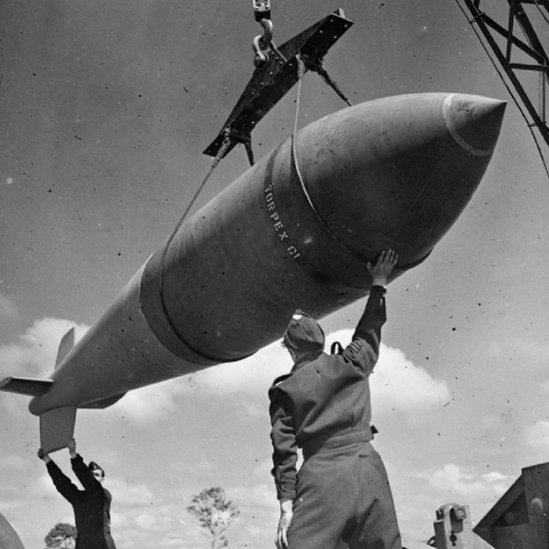I can imagine someone asking the EOD team if they can have it after it was made safe.
https://www.bbc.co.uk/news/world-europe-54522203

https://www.bbc.co.uk/news/world-europe-54522203


Lovely video but don't think it's the same one?Youtube video
https://www.youtube.com/embed/N7RTN8UJLYY
If you want to see what its larger brother, the Grand Slam, would do if it went off above ground, try this video.
https://www.britishpathe.com/video/bomb-story/query/ammunition
The video shows the nominally 22,400 lb (10.16 tonne) Grand Slam, which holds about 9,200 lb (4.17 tonnes) of Torpex, being tested on the Foulness Island ranges in Essex in 1950.
That's more like the size of explosion I would expect!
I'm a bit surprised that it was tested on the surface, though. Weren't these supposed to be "earthquake bombs", designed to explode deep underground?
Here is some video of the Lutzow raid.
https://www.youtube.com/watch?v=vt4iqwkTJkQ&feature=emb_logo
The raid is shown 0:50 to 1:15.
You can see a splash at 1:04 which could be a Tallboy bomb that does not go off. Possibly this one.
This was taken from a post on Pprune
